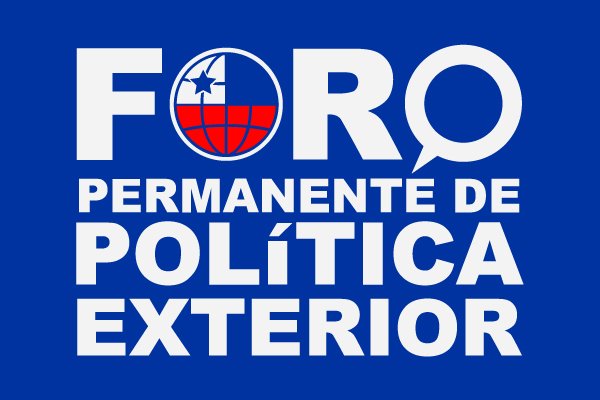BY STEPHANY GRIFFITH-JONES, ILMI GRANOFF AND DOUGLASS SIMS, OPINION CONTRIBUTORS
Our history shows that when we have faced overwhelming economic challenges, we have created public institutions up to the task of meeting them. To meet today’s challenges of COVID-19 recovery, inequality and climate change, a federal green bank that would channel public and private investment for the public interest is essential.
The Clean Energy and Sustainability Accelerator is the green bank for our times. Rep. Debbie Dingell (D-Mich.) recently introduced legislation with bipartisan support, that, if enacted, would establish the accelerator, a nonprofit financial institution with $100 billion in equity and the mission of directing investment into transformative projects that create good jobs, and mitigate both global warming and inequality. It would invest in every state through and alongside local financial institutions. A full 40 percent of investment would support the most vulnerable communities.
President Biden included a version in his American Job’s Plan, and nearly 250 groups have urged Congress to pass the legislation for a green bank as part of the upcoming infrastructure bill.
But questions remain about how to build a successful Accelerator. How large should its initial capitalization be? What can it help achieve? What instruments should it use to achieve its objectives?
The proposed $100 billion is a reasonable capitalization that allows finance on the scale required. The European Investment Bank, which lends to European Union countries with a collective GDP slightly lower than ours, has a capital base of $300 billion USD, half of which will be dedicated to support lending to low-carbon activities by 2025.
The accelerator’s capital base would drive around $460 billion of total investment in 4 years and $880 billion in 10 years, according to recent studies by Vivid Economics. Vivid also estimated that this investment would create nearly 4 million jobs in 4 years and 12 million jobs in the next decade.
Three principles are important to achieve these goals. First, the accelerator must have a clear, well-defined mission that guides its work and enables it to be held accountable.
Second, it should be financially sustainable, but without aiming to maximize profits. This will allow the accelerator to underwrite risks perceived as too great by commercial financial institutions, so as to increase its catalytic effect.
Third, the accelerator must have powers broad enough to match financial instruments to risks and opportunities. Consistent with this principle, Congress has recently expanded the tools of the Development Finance Corporation (and did so with bipartisan support) to compete with European and Asian countries in providing capital to the developing world. We also need the full array of tools — loans, guarantees, securitization and equity investment to meet the challenges at home.
Loans to innovative and strategic projects are an important tool. We know this works: The Department of Energy loaned to Tesla for a factory when private lenders were not ready to take the risk. That loan was paid back early and has catalyzed the electric vehicle market globally. The DOE program still exists, but has less flexibility than the accelerator’s offerings, so the two will work synergistically. We need big, ambitious financing for electricity transmission, commercial demonstration of industrial de-carbonization and new technologies or applications of utility-scale clean power.
We also need to facilitate small loans — for distributed solar energy, heat pumps and other transformative investments — to increase private lenders’ confidence by creating a track record of performing loans and standardizing deal structures. The accelerator will lend to local lenders, who in turn lend to their customers. We know this works from green banks in the U.S. and public banks around the world.
Another key instrument is the guarantee, which is appropriate when private lenders and investors are in principle willing to lend but there is a level of risk that deters them. Private capital can be unlocked if a portion of the risk is covered. Guarantees should be partial — both to limit the risk to the public sector and to ensure that the private sector has skin in the game. Electric vehicle infrastructure is an area where guarantees could be appropriate as the market matures.
Securitization involves pooling projects and then selling slices of the pool, achieving diversification and scale. German public bank KfW did this successfully for energy efficiency. Properly designed, it creates scalable investment products that allow large investors, such as pension funds, to invest.
Finally, there’s equity. Equity is appropriate when the early-stage capital necessary to develop new industries is in short supply. When equity is used, the public sector shares in the upside benefits, rather than just bearing the potential downside risk. Equity investment can also help the cause of social equity by providing balance sheet funding to community-focused lenders who provide financial service to the most vulnerable communities — communities of color, rural communities, as well as those suffering from poverty and environmental degradation. Providing equity combined with technical assistance serves to build clean energy lending capacity and lower the cost of capital for those most in need.
Given the proper mission, mandate and tools, the Clean Energy and Sustainability Accelerator will be a key catalyst in our work to “build back better,” faster, greener and fairer.
Our history shows that when we have faced overwhelming economic challenges, we have created public institutions up to the task of meeting them. To meet today’s challenges of COVID-19 recovery, inequality and climate change, a federal green bank that would channel public and private investment for the public interest is essential.
The Clean Energy and Sustainability Accelerator is the green bank for our times. Rep. Debbie Dingell (D-Mich.) recently introduced legislation with bipartisan support, that, if enacted, would establish the accelerator, a nonprofit financial institution with $100 billion in equity and the mission of directing investment into transformative projects that create good jobs, and mitigate both global warming and inequality. It would invest in every state through and alongside local financial institutions. A full 40 percent of investment would support the most vulnerable communities.
President Biden included a version in his American Job’s Plan, and nearly 250 groups have urged Congress to pass the legislation for a green bank as part of the upcoming infrastructure bill.https://2a098f1345fd11a37d7d05d3b9ecf9c0.safeframe.googlesyndication.com/safeframe/1-0-38/html/container.html
But questions remain about how to build a successful Accelerator. How large should its initial capitalization be? What can it help achieve? What instruments should it use to achieve its objectives?
The proposed $100 billion is a reasonable capitalization that allows finance on the scale required. The European Investment Bank, which lends to European Union countries with a collective GDP slightly lower than ours, has a capital base of $300 billion USD, half of which will be dedicated to support lending to low-carbon activities by 2025.
The accelerator’s capital base would drive around $460 billion of total investment in 4 years and $880 billion in 10 years, according to recent studies by Vivid Economics. Vivid also estimated that this investment would create nearly 4 million jobs in 4 years and 12 million jobs in the next decade.
Three principles are important to achieve these goals. First, the accelerator must have a clear, well-defined mission that guides its work and enables it to be held accountable.
Second, it should be financially sustainable, but without aiming to maximize profits. This will allow the accelerator to underwrite risks perceived as too great by commercial financial institutions, so as to increase its catalytic effect.https://2a098f1345fd11a37d7d05d3b9ecf9c0.safeframe.googlesyndication.com/safeframe/1-0-38/html/container.html
Third, the accelerator must have powers broad enough to match financial instruments to risks and opportunities. Consistent with this principle, Congress has recently expanded the tools of the Development Finance Corporation (and did so with bipartisan support) to compete with European and Asian countries in providing capital to the developing world. We also need the full array of tools — loans, guarantees, securitization and equity investment to meet the challenges at home.
Loans to innovative and strategic projects are an important tool. We know this works: The Department of Energy loaned to Tesla for a factory when private lenders were not ready to take the risk. That loan was paid back early and has catalyzed the electric vehicle market globally. The DOE program still exists, but has less flexibility than the accelerator’s offerings, so the two will work synergistically. We need big, ambitious financing for electricity transmission, commercial demonstration of industrial de-carbonization and new technologies or applications of utility-scale clean power.
We also need to facilitate small loans — for distributed solar energy, heat pumps and other transformative investments — to increase private lenders’ confidence by creating a track record of performing loans and standardizing deal structures. The accelerator will lend to local lenders, who in turn lend to their customers. We know this works from green banks in the U.S. and public banks around the world.
Another key instrument is the guarantee, which is appropriate when private lenders and investors are in principle willing to lend but there is a level of risk that deters them. Private capital can be unlocked if a portion of the risk is covered. Guarantees should be partial — both to limit the risk to the public sector and to ensure that the private sector has skin in the game. Electric vehicle infrastructure is an area where guarantees could be appropriate as the market matures.
Securitization involves pooling projects and then selling slices of the pool, achieving diversification and scale. German public bank KfW did this successfully for energy efficiency. Properly designed, it creates scalable investment products that allow large investors, such as pension funds, to invest.
Finally, there’s equity. Equity is appropriate when the early-stage capital necessary to develop new industries is in short supply. When equity is used, the public sector shares in the upside benefits, rather than just bearing the potential downside risk. Equity investment can also help the cause of social equity by providing balance sheet funding to community-focused lenders who provide financial service to the most vulnerable communities — communities of color, rural communities, as well as those suffering from poverty and environmental degradation. Providing equity combined with technical assistance serves to build clean energy lending capacity and lower the cost of capital for those most in need.
Given the proper mission, mandate and tools, the Clean Energy and Sustainability Accelerator will be a key catalyst in our work to “build back better,” faster, greener and fairer.
Stephany Griffith-Jones is a professor at Sussex University, Financial Markets Program director at the Initiative for Policy Dialogue at Columbia University, and a distinguished fellow at the ClimateWorks Foundation.
Ilmi Granoff is the Finance Program director at the ClimateWorks Foundation and a senior research associate at the Institute for Innovation and Public Purpose, University College London.
Douglass Sims is the director of the Green Finance Center at the Natural Resource Defense Council.
Contenido publicado en The Hill





